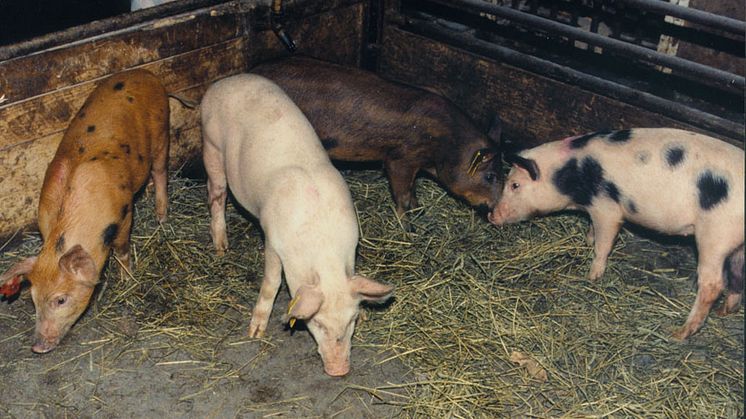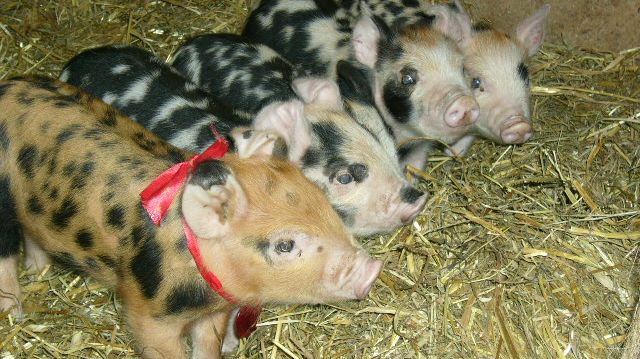Pressmeddelande -
Why domestic animals changed coat
You notice it in your everyday life, the bewildering diversity in coat colour among our pigs, dogs and other domestic animals. This stark contrasts with the uniformity of colour within wild animals. A new study on pigs, published January 16 in the open-access journal PLoS Genetics, reveals that the prime explanation for this phenomenon is that humans have actively changed the coat colour of domestic animals by cherry-picking and actively selecting for rare mutations and that this process that has been going on for thousands of years.
This result is important since it eliminates several other explanations for coat colour changes within domestic animals. One alternative idea was that wild type colour was lost because the pressure to remain camouflage was eliminated. This kind of change is analogous to the loss of vision in animals that live in complete darkness, such as caves. Others proposed that the change of colour was a by-product of domestication because some genes control both a trait under strong selection (e.g. behaviour) and colour. "Our study settles the debate by showing that the prime reason is intentional selection by humans", says Leif Andersson at Uppsala University who led the study.
The researchers studied one of the key genes controlling coat colour in animals, the melanocortin-1 receptor (MC1R) gene, in both wild and domestic pigs from Europe and Asia. Though there were numerous differences in DNA sequence among the wild boar, none of them altered the protein function, and thus the coat colour remained camouflaged. This result demonstrates that mutations that do change the MC1R protein are quickly removed from wild populations in order to maintain camouflage colouration. In domestic pigs, however, nearly all observed DNA changes changed protein function leading to a wide variety of different colors.
Compared with the wild-type sequence, some of the domestic MC1R variants differed by up to three consecutive changes, thus revealing that domestic coat colour variation is not a recent phenomenon. "We know that the Mesopotamians were keeping track of differently coloured farm animals 5,000 years ago, and our results suggest black and white and spotted pets and livestock may have been around a lot longer than that", said Greger Larson, a Research Fellow at Uppsala University and at Durham University.
So why did early farmers bother to change the coat of their livestock? One explanation could be that it facilitated animal husbandry since it is easier to keep track of livestock that are not camouflaged. Another could be that it has acted as a metaphor for the improved characteristics of the early forms of livestock compared with their wild ancestors. A third possibility is that the early farmers were as amused and as taken with biological novelty and diversity as we are today.
The present study also sheds light on the process of molecular evolution. Charles Darwin was the first to recognize the importance of studying domestic animals as a model of evolution. An argument that has been raised against Darwin's theory is that is impossible to create complicated structures like an eye, based on the underlying random process of mutation. "This study shows how quickly a protein can change under strong selection and how humans have "created" black-spotted pigs by selecting several consecutive mutations that have occurred by a random process", says Leif Andersson.
This project was funded by the European Commission, the European Molecular Biology Organization, the Swedish Foundation for Strategic Research, and the Swedish Research Council for Environment, Agricultural Sciences and Spatial Planning.
For more information contact Leif Andersson: +46-18-471-4904 email: leif.andersson@imbim.uu.se

